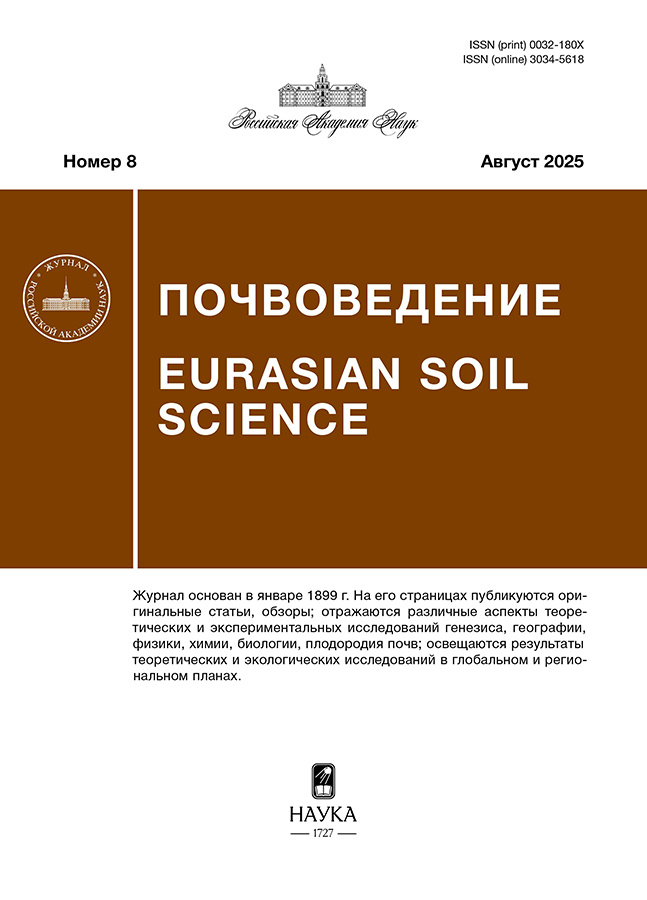Carbonate profile of soils of chestnut solonetz complexes and its anthropogenic transformation in arable land
- Autores: Khitrov N.B.1, Kruglyakova N.G.1,2, Gorokhova I.N.1, Kravchenko E.I.1
-
Afiliações:
- Dokuchaev Soil Science Institute
- All-Russian Research Institute of Irrigated Agriculture – branch of the Federal Scientific Center for Hydraulic Engineering and Land Reclamation named after A.N. Kostyakov
- Edição: Nº 8 (2025)
- Páginas: 1025–1054
- Seção: GENESIS AND GEOGRAPHY OF SOILS
- URL: https://gynecology.orscience.ru/0032-180X/article/view/688116
- DOI: https://doi.org/10.31857/S0032180X25080046
- EDN: https://elibrary.ru/INOENA
- ID: 688116
Citar
Texto integral
Resumo
Information on the general structure of soil profiles and, in particular, on the carbonate profile of natural soils and their transformation under anthropogenic influences under arable conditions in the dry steppe zone is systematized. The objects of the study were chestnut solonetz associations in the south of the Volga Upland and the northern part of the Ergeni Upland in the Volgograd region on rain-fed and irrigated arable land. Three directions of anthropogenic transformation of the carbonate profile of soils in chestnut solonetz associations have been noted: (1) the preservation of the original eluvial-accumulative profile with effervescence under HCl application from a certain depth; (2) the formation of profile-effervescent soils, starting from the day surface; (3) the formation of complex-effervescent soils with alternating horizons containing and not containing carbonates. Six known mechanisms of carbonate accumulation in arable soils of the dry steppe are systematized and a key-determinant for field diagnostics of their combinations in a specific soil is proposed based on a morphological analysis of the soil profile and the current external conditions of its functioning. A diagram of the anthropogenic transformation of soils in chestnut solonetz associations has been compiled. A criterion has been formulated for assessing the anthropogenic transformation of soil cover on arable land in the dry steppe zone – the proportion of effervescent soils from the daytime surface is more than 20–30% of the area of an individual field or part of it. A field verification of the criterion was carried out on arable land with different land use histories and initial natural conditions on the territory of the experimental station “Oroshaemaya” in the Volgograd region.
Texto integral
Sobre autores
N. Khitrov
Dokuchaev Soil Science Institute
Autor responsável pela correspondência
Email: khitrovnb@gmail.com
ORCID ID: 0000-0001-5151-5109
Rússia, Moscow
N. Kruglyakova
Dokuchaev Soil Science Institute; All-Russian Research Institute of Irrigated Agriculture – branch of the Federal Scientific Center for Hydraulic Engineering and Land Reclamation named after A.N. Kostyakov
Email: khitrovnb@gmail.com
Rússia, Moscow; Volgograd
I. Gorokhova
Dokuchaev Soil Science Institute
Email: khitrovnb@gmail.com
Rússia, Moscow
E. Kravchenko
Dokuchaev Soil Science Institute
Email: khitrovnb@gmail.com
ORCID ID: 0000-0003-4609-5650
Rússia, Moscow
Bibliografia
Arquivos suplementares















